Bird News from Nial Moores
This was a short research trip to the heavily-forested, mountainous and isolated Ulleung Island, aiming to improve understanding of migration strategies, both across the East Sea and also across-island. Unfortunately only 2.5 days could be spent in the field. Much of October 20th was spent travelling and only two hours could be spent surveying in Taewa. On 21st, heavy rain, persistent through until the early afternoon, and strong northeasterly winds (apparently leaving the Asian mainland near Vladivostok) restricted fieldwork to only 3 hours at Hyeonpo. More or less full days were then spent in the field on 22nd and especially on the 23rd, with Nari, Cheonbu, Hyeonpo and Taewa surveyed in sunny conditions with light winds on the latter date. Other work commitments meant no fieldwork was conducted on the 24th; and the 25th was comprised only of 8 hours of boat trips and 20-30 minutes in the field on Dongdo in Dokdo (instead of the anticipated 2-3 hours) under clear skies and Force 2-3 westerlies.
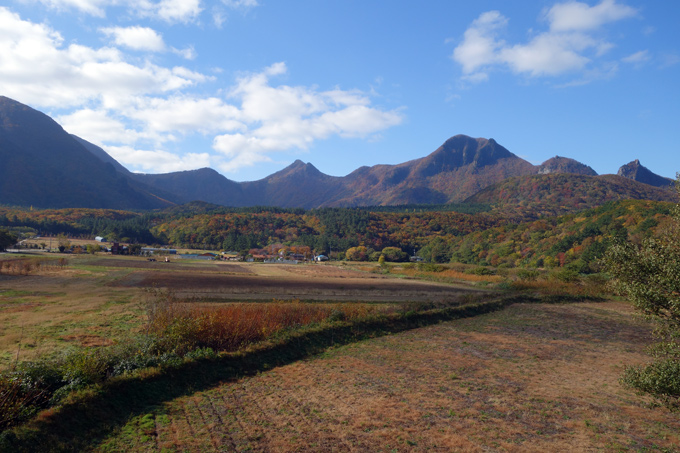
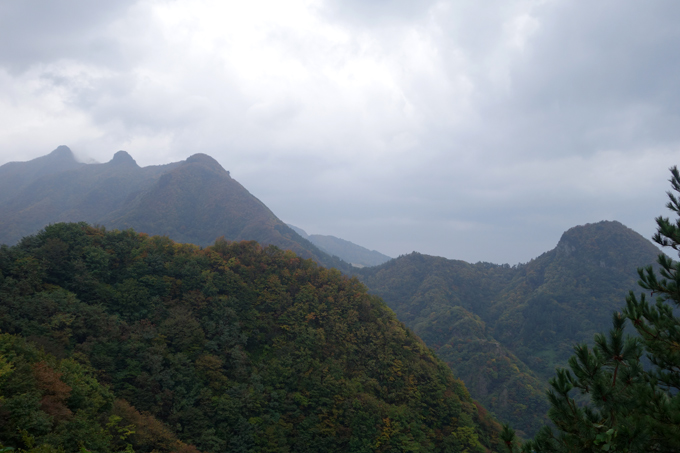
In total, only 82-84 species were logged, remarkably with no phylloscopus warblers or flycatchers encountered, and only small numbers of buntings found. Brambling and Eurasian Siskin were the only numerous landbirds. As in 2013, many thanks to the M Motel in Dodong for their kindness and to authorities for permission to visit Dongdo, “Where morning in Korea starts.” A full list follows (all bird images digiscoped with a handheld Sony RX 100 II camera through a truly superb Swaorvski Optik scope):
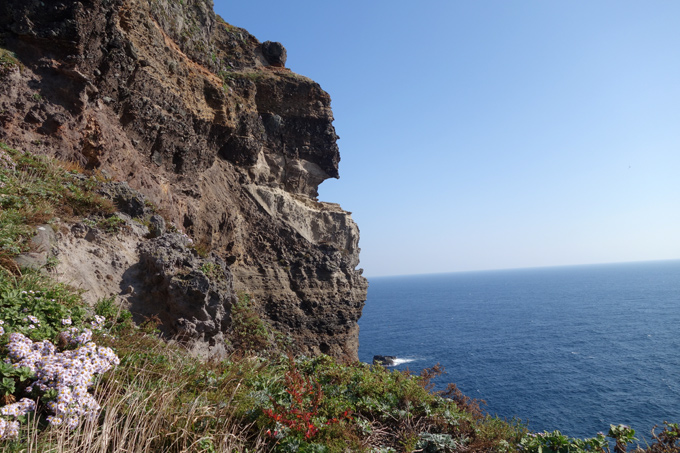

- Greater White-fronted Goose Anser albifrons. One at Hyeonpo on 23rd.
- Mandarin Duck Aix galericulata. Probably 120 on the sea off the sheltered southern side of Ulleung on the 21st and 22nd, with only eight there on the 23rd (once winds had lightened) when also c.15 in various stages of moult at Taewa.
- Eurasian Wigeon Anas penelope. One at Nari and two at Taewa on the 23rd.
- Mallard Anas platyrhynchos. Six at Taewa on the 20th; five in various harbours on the 21st and 22nd; and five in Taewa on the 23rd.
- Eastern Spot-billed Duck Anas zonorhyncha. At Taewa, four on the 20th; three on the 22nd and two on the 23rd.
- Northern Pintail Anas acuta. One at Taewa on the 23rd.
- Baikal Teal Anas formosa. One male with Mandarins on the sea on the 22nd.
- Eurasian Teal Anas crecca. Five to ten each day in the field.
- Common Pochard Aythya ferina. One at Taewa on the 20th and two there on the 23rd.
- American Scoter Melanitta americana. One at Hyeonpo on the 21st and 22nd.
- Red-breasted Merganser Mergus serrator. Singles on the 20th and 23rd.
- Common Pheasant Phasianus colchicus. Widespread and numerous, with e.g. probably 75 seen on the 23rd.
- Streaked Shearwater Calonectris leucomelas. A total of 35 seen from the ferry between Pohang and Ulleung on the 20tt, with four seen in an hour of observation on the 25th on the way back to Pohang. From Ulleung, 70 seen off Taewa on the 20th; three seen off Dodong on the 21st; five off Hyeonpo on the 22nd; none seen on 23rd; and only five seen between Ulleung and Dokdo on the 25th.
- Little Grebe Tachybaptus ruficollis. One in Taewa on the 23rd.
- Grey Heron Ardea cinerea. Each day, 2-4 along the coast.
- Western Great Egret Ardea alba alba. Four on the 21st; 19 at Namyang on the 22nd; and one at Hyeonpo on the 23rd.
- Temminck’s Cormorant Phalacrocorax capillatus. Seen in small numbers each day, with 45 off Hyeonpo on the 21st and ten on Dokdo on the 25th the highest counts.
- Western Osprey Pandion haliaetus. One at Hyeonpo on the 21st.
- Japanese Sparrowhawk Accipiter gularis. At least two on the 22nd and five on the 23rd (including two calling).
- Eurasian Sparrowhawk Accipiter nisus. The most regularly-encountered raptor, with three on 22nd; at least three on the 23rd; and on 25th, two over Sadong Harbour, one at sea about 10km east off Ulleung and at least three (and possibly up to five) on Dokdo.
- Northern Goshawk Accipiter gentilis. One on 21st.
- Eurasian Coot Fulica atra. On 20th, three probables at sea about 30km from Pohang, one definite about 10km off Ulleung and one at Taewa. A flock of about 20 birds on the sea seen very briefly and poorly from a moving bus on the 21st were also thought likely to be this species.
- Common Snipe Gallinago gallinago. Two at Taewa on the 23rd.
- Common Sandpiper Actitis hypoleucos. One at Taewa on the 23rd.
- Dunlin Calidris alpina. One at Taewa on the 23rd.
- Black-tailed Gull Larus crassirostris. Seen each day of fieldwork, with (only) 13 in open sea between Pohang and Ulleung and c. 1,000 along the coast on Ulleung on 20th; probably 1,500 on the 21st; 1,000 on 22nd; >1,000 on 23rd; and 150 around Dokdo, with 3-5 at sea between Ulleung and there, on the 25th.
- Vega Gull Larus vegae. Five on 20th; 20 on 21st; 30 on 22nd; and 100 on the 23rd, including one presumed birulai (round-headed, pale-mantled, yellow-legged, and like all the vegae, with not-yet started / incomplete primary moult.
- Mongolian Gull Larus mongolicus. One on the 23rd.
- Slaty-backed Gull Larus schistisagus. Three on 21st and 10+ on 22nd.
- Taimyr Gull Larus heuglini taimyrensis. Two on 22nd.
- Common Tern Sterna hirundo. At least 58 from the ferry off the Guryongpo Peninsula on the 20th.
- Black Wood Pigeon Columba janthina. Small numbers seen each day on Ulleung, including on one or more dates in Dodong (single birds); above Dodong (single birds); near Sadong (single birds); south of Taewa (two); in Taewa (3-5); above and in Hyeonpo (2-3); in Cheonbu (single birds); along the road between Cheonbu and Nari (c. 5); and in the Nari basin (2+). Considering this species’ secrecy; high density in good habitat on other islands; potential available habitat; and the limited time spent in the field / limited area covered, it seems likely that the Ulleung population could be as many as 200-500+ individuals (?). If anyone reading this knows of any published survey reports and population estimates for this Ulleung population of Black Wood Pigeon, could you please let us know? Thank you.
- Oriental Turtle Dove Streptopelia orientalis. One seen at sea halfway between Pohang and Ulleung on the 20th; 5-20 seen each day on Ulleung; and two seen on Dokdo, in very limited coverage of that island.
- White-backed Woodpecker Dendrocopos leucotos takahasii. Four were seen in deciduous and mixed woodland along c. 1.5km of road between the Nari basin and Cheonbu on 23rd. Overall impressions of this Ulleung-endemic subspecies include: apparently smaller-billed than nominate (with less intense and persistent pecking heard); less heavily streaked below; and probably less white on the upperparts, with also a perhaps more obviously red vent.
- Great Spotted Woodpecker Dendrocopos major. One was seen well in Hyeonpo on 23rd: presumably a migrant but from where? Ulleung is about 130km east off the Korean coast; almost twice that distance from the nearest Japanese islands (to the southeast); and c.615km SSW from Vladivostok.
- Common Kestrel Falco tinnunculus. Singles on 22nd and 23rd.
- Peregrine Falcon Falco peregrinus. Between two and three seen (most dates) on Ulleung and at least one on Dokdo.
- Bull-headed Shrike Lanius bucephalus. Five or six on 23rd.
- Rook Corvus frugilegus. One on the 21st in Hyeonpo; and six in Nari on the 22nd increasing to nine on 23rd, when watched departing to the SE.
- Large-billed Crow Corvus macrorhynchos. One (subspecies unknown, but perhaps mandschuricus?) on Dodko on the 25th.
- Coal Tit Periparus ater. Two on 21st, one on 22nd, and 10+ on 23rd.
- Varied Tit Sittiparus varius. Common and widespread on Ulleung, with e.g. 75-100 encountered on 23rd. All that were seen well showed the same suffused and sullied look to the upperparts noted in the species here in November 2013 (noticeably different to birds seen on the mainland in recent weeks).
- Eastern Great Tit Parus minor. Locally common, with up to 50 encountered on 23rd. As noted in 2013, birds here seem to have a slightly different vocal dialect to birds on the mainland (frequently using a Marsh Tit like “tut” call), but otherwise few (if any) obvious plumage differences. Although Ulleung birds are afforded full subspecific status (dageletensis), a comparative study on Eastern Great Tits in Korea by Huh et al. (2009), published in the Korean Journal of Ornithology, found no obvious differences in external characters in birds on Ulleung with birds from other parts of the ROK. However, the paper’s abstract mentions slightly greater tarsus length and total length, and occasional birds in November 2013 especially showed a more obvious yellowish flush to the underparts than is typical of even young Eastern Great Tit on the mainland. It could be argued that these features support the hypothesis that the population on Ulleung might have been influenced by the occasional/ extremely rare arrival of irruptive Northern Great Tits, resulting over time in the expression of diluted hybrid characters.
- Eurasian Skylark Alauda arvensis. One at Hyeonpo on 21st; and two at Nari on 22nd, increasing to seven or eight on 23rd.
- Brown-eared Bulbul Hypsipetes amaurotis. Encountered in small numbers daily on Ulleung with a maximum 25 on 23rd. One was also heard on Dodko on 25th.
- Japanese Bush Warbler Horornis diphone. One was heard near Cheonbu on 23rd.
- Long-tailed Tit Aegithalos caudatus. At least five (of unknown subspecies) were heard but not seen in spite of much searching on 23rd.
- Middendorff’s Grasshopper Warbler Locustella ochotensis. A locustella seen in very inclement conditions in Hyeonpo on 21st was most likely this species.
- Japanese White-eye Zosterops japonicus. On 23rd, 15-20 were heard (none seen) in woodland between Nari and Cheonbu. Based on calls, all seemed most likely to be japonicus (though one small rapidly-moving flock sounded at distance closer to Chestnut-flanked than to Japanese White-eye).
- Goldcrest Regulus regulus. First noted on 23rd, when three were heard. Two or three were on Dodko on 25th.
- Eurasian Wren Troglodytes troglodytes. Between one and six were heard each day on Ulleung.
- White-cheeked Starling Spodiopsar cineraceus. Three on 22nd; 23 in Hyeonpo on 23rd; and c.15 on Dokdo on 25th.
- Common Starling Sturnus vulgaris. Seven were in Hyeonpo on 22nd (but were not seen on 23rd, despite searching the same area).
- Grey Thrush Turdus cardis. Two were seen well from the road between Nari and Cheonbu on 23rd and one was on Dokdo on 25th.
- Eye-browed Thrush Turdus obscurus. One rather odd-looking individual was seen on Dodko on 25th (apart from the face pattern, its plumage looked remarkably like Brown-headed Thrush).
- Pale Thrush Turdus pallidus. Presumably massively overlooked, as birds appeared to be absent until you actually enter forest – which covers most of Ulleung. One was seen on 21st; two on 22nd; 45+ on 24th (including one flock of 35); and on 25th, one was heard coming in off the sea before sunrise, and 1-2 were on Dokdo.
- Dusky Thrush Turdus eunomus. On 22nd, 10-15 were at Nari, with 30+ seen there on 23rd (with one flock containing at least one probable Naumann’s Thrush). One was on Dokdo on 25th.
- Bluethroat Luscinia svecica. One was in Hyeonpo on 22nd.
- Red-flanked Bluetail Tarsiger cyanurus. One on 22nd and two on 23rd.
- Daurian Redstart Phoenicurus auroreus. Present in small numbers daily, with at least 20 on 23rd the highest day count. One was on Dokdo on 25th.
- Blue Rock Thrush Monticola solitarius. Present in small numbers daily, with 6+ on 23rd the highest day count.
- Stejneger’s Stonechat Saxicola stejnegeri. Present in small numbers daily, with one on 20th; six in Hyeonpo on 21st; 20 on 22nd; 30 on 23rd; and at least two on Dokdo on 25th.
- Russet Sparrow Passer rutilans. Although believed to be a summer visitor to Ulleung, still fairly widespread, with many birds that were seen well appearing perhaps to be birds of the year (?). At least 50 were in Nari on the 22nd, with one in Hyeonpo and two in Cheonbu. On 23rd, 30+ were seen in the small part of the Nari basin that was surveyed; 2+ were in Cheonbu and 20 were in Taewa.
- Grey Wagtail Motacilla cinerea. Two or three were in the stream at Taewa on 20th and 23rd.
- White Wagtail Motacilla alba. Two on 22nd, and five (all lugens) on 23rd. One lugens was on Dokdo on 25th.
- Olive-backed Pipit Anthus hodgsoni. Present daily on Ulleung in very small numbers (1-5).
- Red-throated Pipit Anthus cervinus. Two in Hyeonpo on 21st; five on 22nd; and 4+ on 23rd.
- Buff-bellied Pipit Anthus rubescens. Present in small numbers daily, with e.g. 60 on 22nd and 45+ on 23rd the highest counts. At least 2-3 were on Dokdo on 25th.
- Brambling Coelebs montifringilla. Large numbers arrived during the survey period. None were logged on the 20th; 30 were in Hyeonpo on 21st; a conservative 800-1,000 were counted on 22nd; and 850+ were counted on 23rd, with some flocks seen to gain height and cross the mountain ridge to the southwest on 23rd. On 25th, 300-400 were seen at dawn in Sadong harbor, and 100+ were on Dodko.
- Hawfinch Coccothraustes coccothraustes. Two were in Nari on 22nd and one was seen there on 23rd.
- Chinese Grosbeak Eophona migratoria. Five were in Nari on 23rd.
- Eurasian Bullfinch. Pyrrhula pyrrhulawas heard in Nari on 22nd and 1-2 were heard along the Nari-Cheonbu road on 23rd.
- Grey-capped Greenfinch Chloris sinica. Small numbers (5-10) were seen each day on Ulleung and 2+ were on Dokdo on 25th.
- Common Redpoll Acanthis flammea. At least 5-8 were in Nari on 22nd and 10+ were seen in flight there on 23rd. On Dokdo, four were seen (and very poorly digiscoped) on Dokdo on 25th.
- Arctic Redpoll Acanthis hornemanni. Two probables were seen in Nari on 22nd, both only in flight so views were inadequate to confirm identification. Both appeared strikingly pale (much more so than the still-pale flammea Commons), in flight showing clean-looking vents, broad white-looking rump bands and extensive white on the wings. One gave a series of calls that sounded slower and softer, less nasal than the other redpolls; and one of these pale birds also looked obviously larger than a (presumed) Common Redpoll in direct comparison.
- Red Crossbill Loxia curvirostra. On 23rd, two calling birds, mixed in a flock of 50 similar-sized high-flying finches, were certainly this species.
- Eurasian Siskin Spinus spinus. A large arrival took place on the 21st, with 560 counted moving across a high pass above Hyeonpo in only 30 minutes, with smaller flocks seen along the coastal road from the moving bus. Many of these departed the island or perhaps more likely disappeared into dense forest in the interior of the island, with only 150 counted on 22nd and 100 on 23rd. On 25th, 50+ were seen behind Sadong harbor at dawn, and 50-75 were on Dokdo.
- Pine Bunting Emberiza leucocephalos. One heard in Hyeonpo on 21st and two heard in Nari on 22nd.
- Chestnut-eared Bunting Emberiza fucata. One was in Nari on 22nd and 23rd.
- Rustic Bunting Emberiza rustica. Not numerous, but still the only “common” bunting, with two in Taewa on 20th; 3+in Hyeongpo on 21st; and 50+ on 22nd and 23rd.
- Yellow-throated Bunting Emberiza elegans. Two or three on 21st; 5+ on 22nd and 23rd; and at least one on 25th on Dokdo.
- Black-faced Bunting Emberiza spodocephala. Remarkably scarce, with two heard on 22nd and one seen on 23rd (a First Calendar-year personata).
- Pallas’s Reed Bunting Emberiza pallasi. One or two in Nari on 22nd and one there on 23rd.
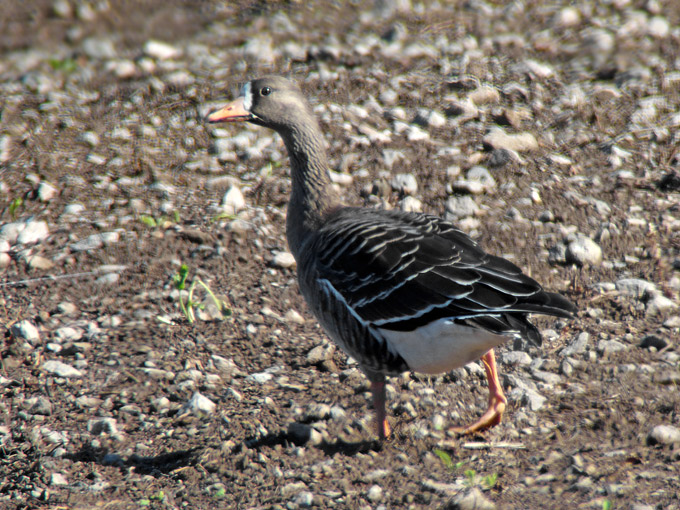
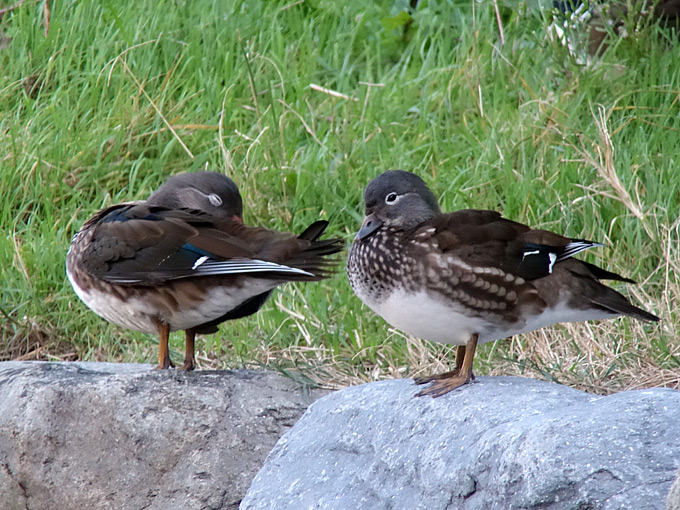
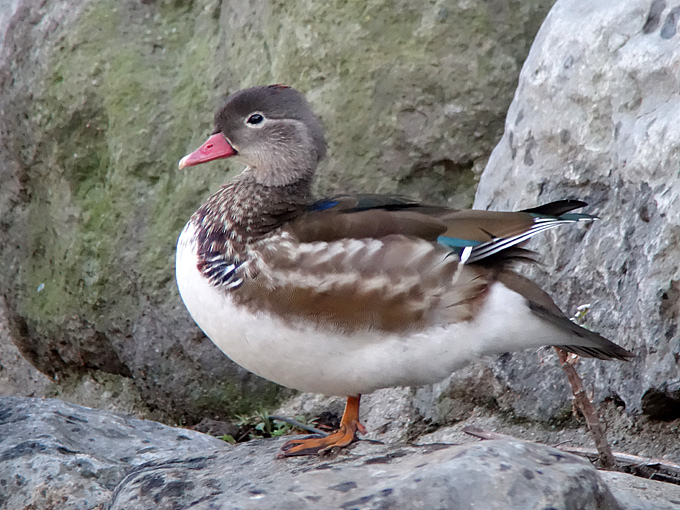
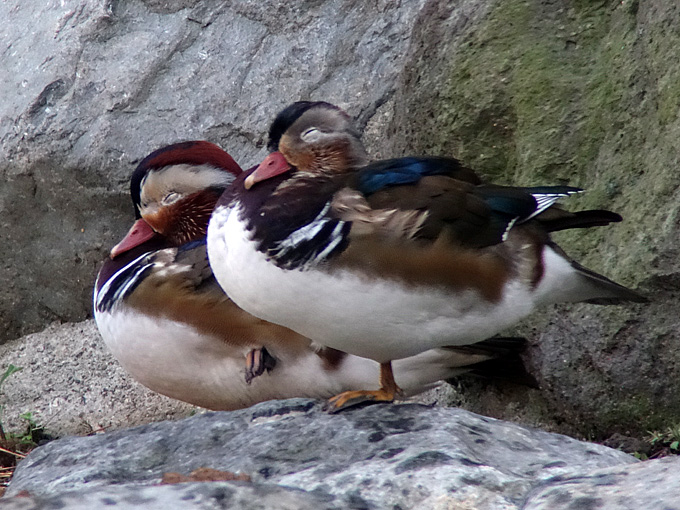
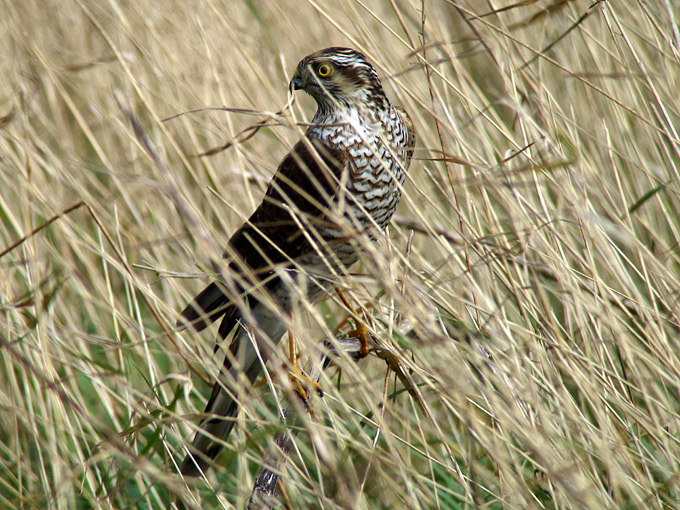
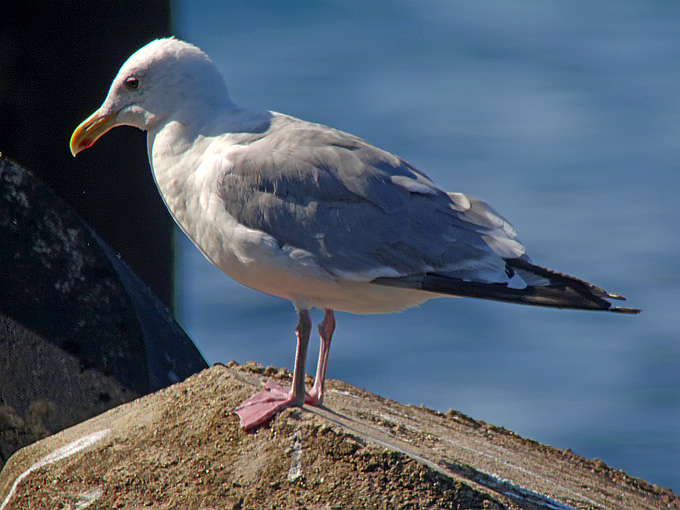
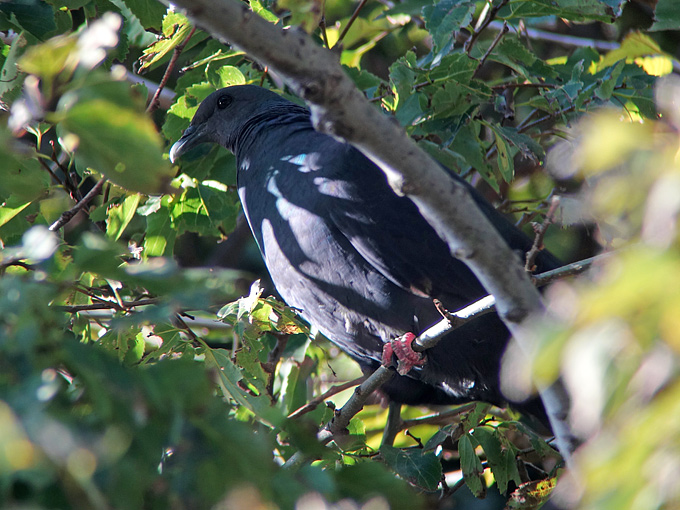
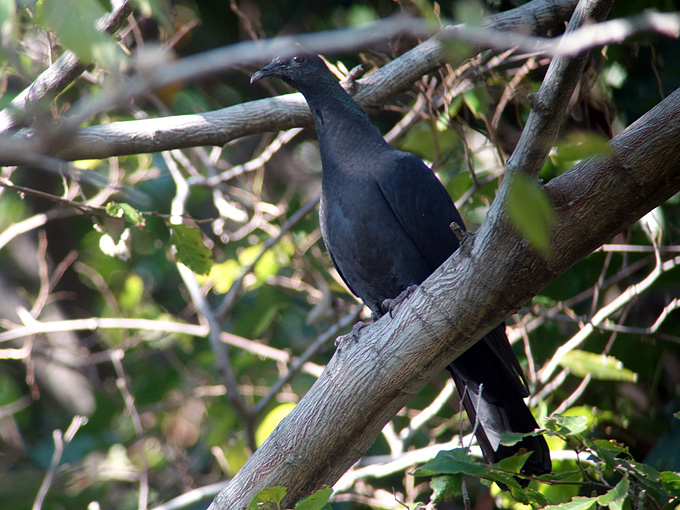
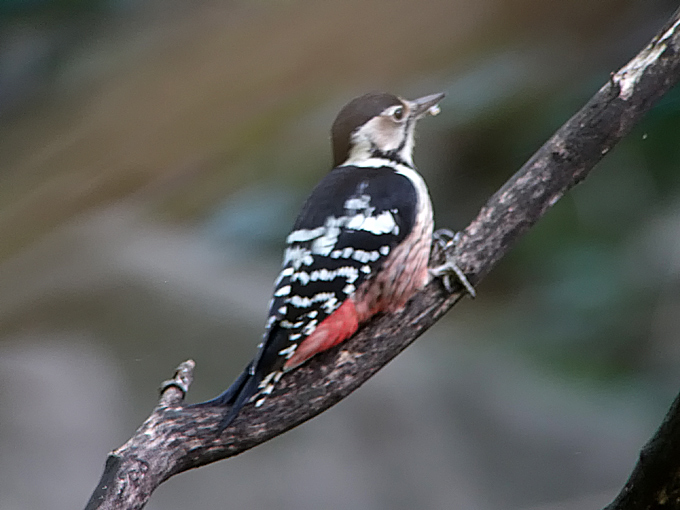
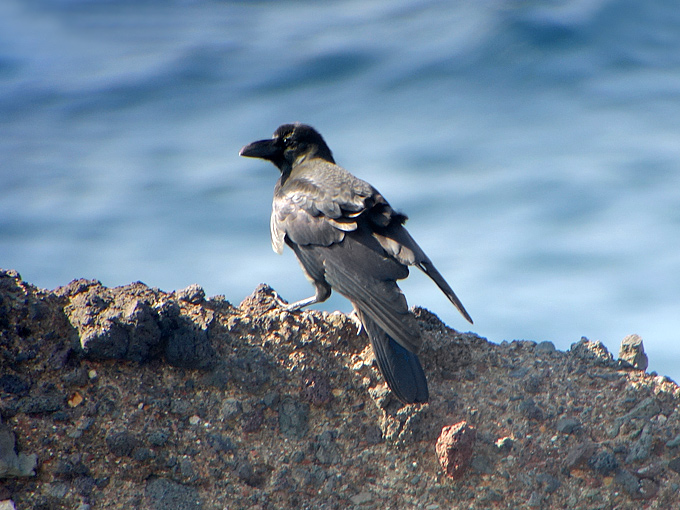
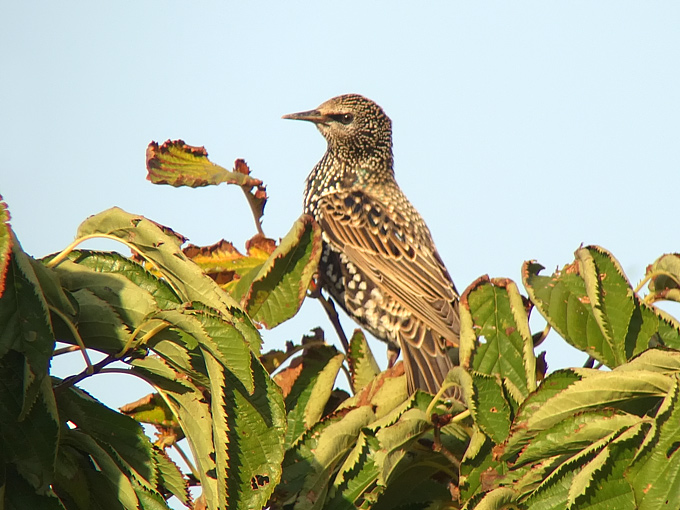
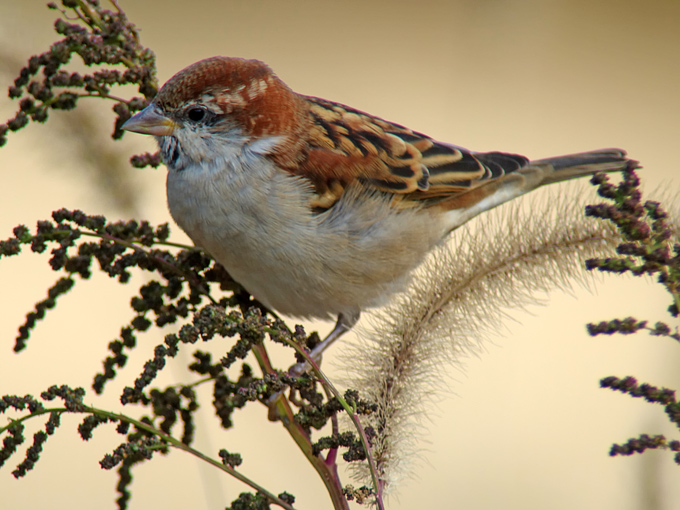
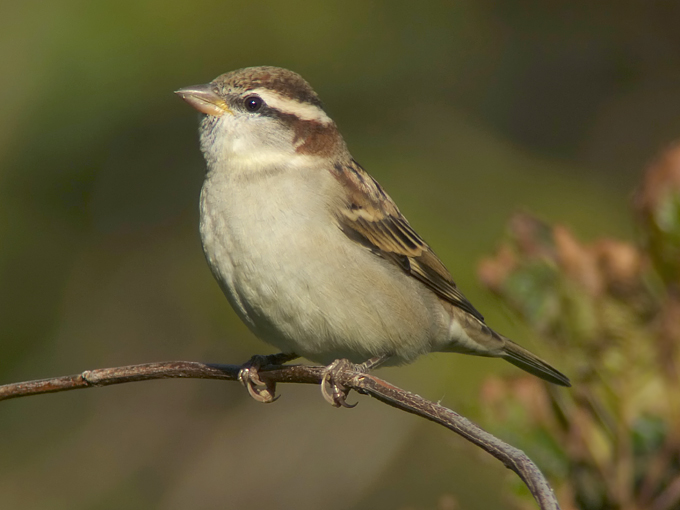
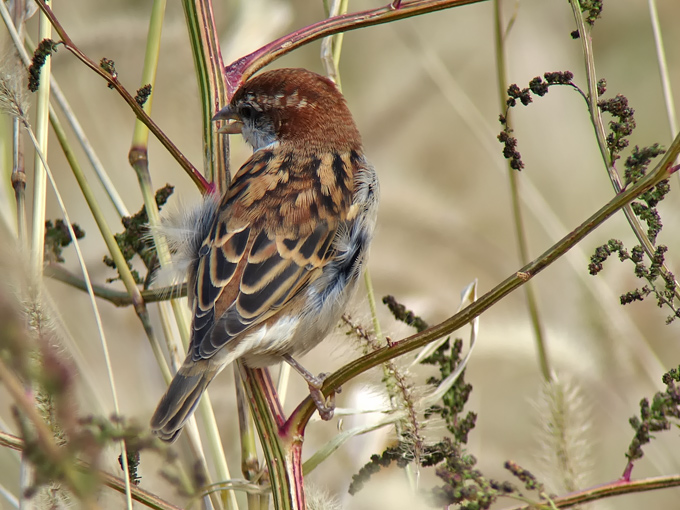
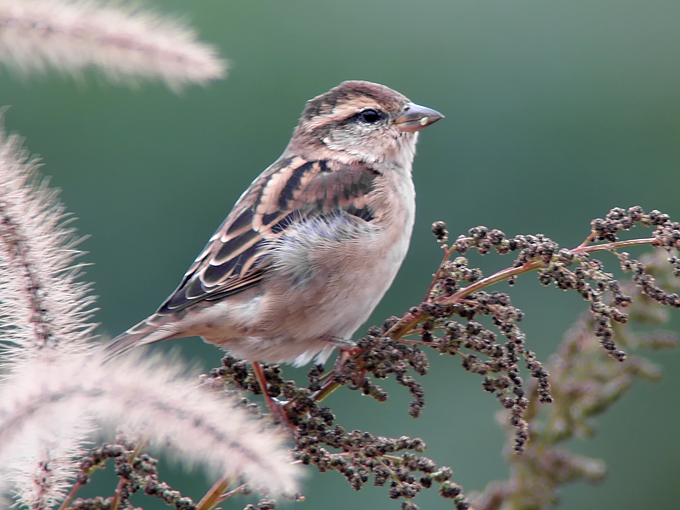
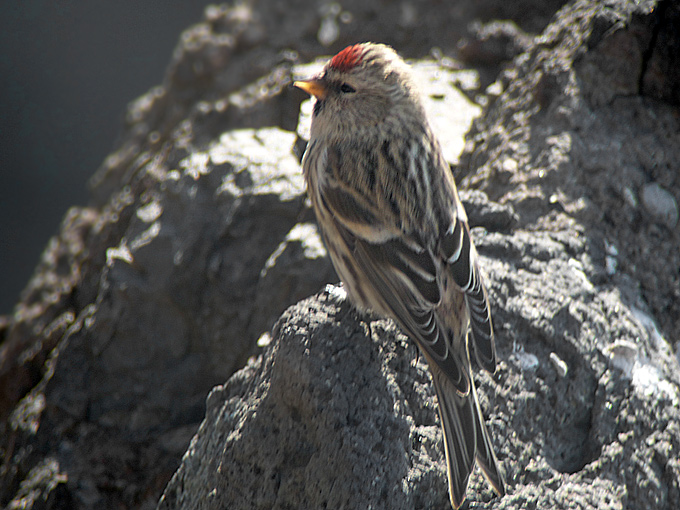
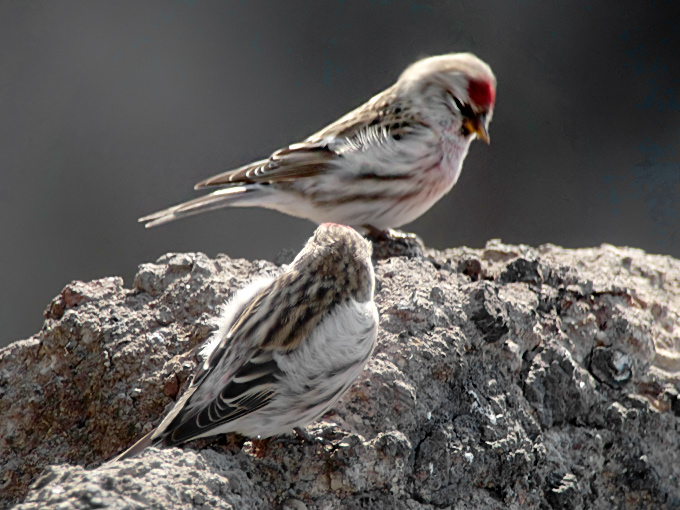
Observations (from a few days in November in 2013 and this visit) suggest that in autumn many birds arrive in the northeast of the island, then move southwestward along the western flank of Naribong (with its peak of 816m) and across the Nari basin (caldera) and on southwestwards; with others continuing along the north coast (with its gentle ENE-WSW axis) on to Hyeonpo. Smaller numbers also appear to arrive and move south along the east coast, perhaps when they encounter westerly winds (=headwinds). The species mix, especially when compared with Yellow Sea islands, suggests that at least a few birds reach Ulleung from Japan. However, on the very limited survey effort to date, rather more of these migrants are likely coming from rather further north (perhaps the Russian coast near Vladivostok).

